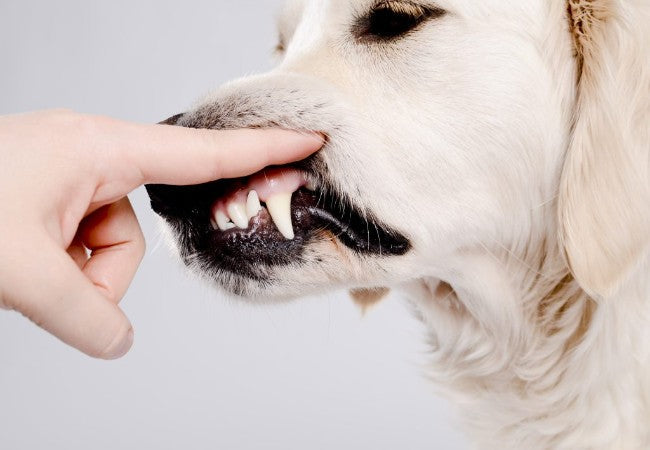Veterinary Guide to Gingival Hyperplasia in Dogs 2025🐶🩺

In this article
Veterinary Guide to Gingival Hyperplasia in Dogs 2025🐶🩺
By Dr. Duncan Houston BVSc
🔍 Introduction
Gingival hyperplasia (gum overgrowth) is an excessive proliferation of gum tissue that can cover teeth, create pseudopockets, trap debris, and lead to periodontal disease. In this comprehensive 2025 guide, Dr. Duncan Houston, BVSc, explains its causes, signs, diagnosis, treatment options, and long-term prevention strategies for dog owners. 🦷
💡 What Is Gingival Hyperplasia?
This condition—also called gingival enlargement—is when gum tissue overgrows, either generally or locally, making proper tooth cleaning difficult and increasing infection risk. Though often benign, it can mimic tumors and should be evaluated carefully.
🐾 Who Is Most Affected?
- Genetic predisposition in breeds like Boxers, Great Danes, Bulldogs, Collies, Mastiffs, Retrievers, Cocker Spaniels and Dobermans.
- Drug-related issues in dogs taking cyclosporine (Atopica®), calcium channel blockers (e.g., amlodipine), and anticonvulsants.
- Inflammatory response to plaque and bacteria may trigger overgrowth instead of recession.
🚨 Signs & Symptoms
- Firm, swollen, or lumpy gums covering part or all of the teeth.
- Pockets that trap food, plaque, and hair, potentially leading to bad breath and bleeding.
- Difficulty chewing, drooling, lip licking, discomfort, or reduced appetite.
🔬 Diagnosis
- Veterinary oral exam—often under anesthesia—for full visualization and dental X-rays.
- Biopsy is recommended to distinguish benign hyperplasia from neoplasia or epulis.
- Medication history review to identify drug-induced cases.
🛠 Treatment Options
1. Dental Cleaning & Surgical Removal
- Thorough dental cleaning under anesthesia with scaling, root planing, and X-rays.
- Gingivectomy/gingivoplasty using scalpel, laser, electrocautery, or burs to reshape gums and eliminate pseudopockets.
- Local nerve blocks ensure pain-free surgery; tissue biopsy samples are sent for pathology.
2. Medication Adjustment
- If caused by medication, discontinuing or switching drugs often resolves the hyperplasia.
📆 Post‑Op Care & Monitoring
- Pain relief, soft diet for ~2 weeks to protect healing gums.
- Use an Elizabethan collar to prevent chewing at the surgical site.
- Check-ups and possibly repeat cleanings every 6–12 months; more frequent in predisposed breeds.
- Daily home care with brushing, dental chews, or VOHC-approved products to minimize plaque.
📈 Prognosis
Surgical removal typically improves comfort and function, but recurrence is common—especially in genetic forms—so ongoing management is essential. Removing causative drugs usually prevents relapse.
🛡 Prevention & Owner Tips
- Commit to daily brushing and regular professional dental cleanings.
- Provide chew toys or dental diets approved by VOHC to help reduce plaque.
- Monitor medication side effects and consult your vet promptly if gum changes occur.
- Early intervention helps prevent severe enlargement, pain, and tooth loss.
🔧 Tools & Services Support
- Ask A Vet App: Get instant vet advice for dental concerns and scheduling cleanings 📲
✅ Final Thoughts
Gingival hyperplasia, though not immediately dangerous, can dramatically affect your dog's oral health and comfort. Each case requires a tailored approach—from cleaning and surgery to home care and medication review. With proactive management, dogs enjoy healthy mouths and better quality of life. Rely on trusted services like AskAVet.com. 🐾❤️
Download the Ask A Vet app today to receive personalized guidance on dental care, recovery, and ongoing prevention. 🦷📱






